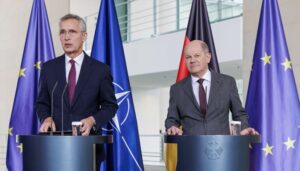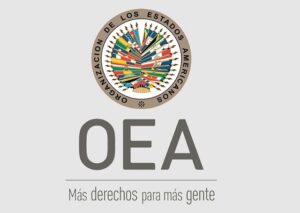Los Miembros de la OMC facilitan las importaciones y reducen las restricciones al comercio, pero las restricciones a la exportación de alimentos subsisten

Según el informe de mediados de año de la Directora General sobre los hechos relacionados con el comercio, entre mediados de octubre de 2022 y mediados de mayo de 2023, los Miembros de la OMC siguieron facilitando las importaciones y, por lo general, actuaron con moderación en lo que respecta al uso de medidas restrictivas del comercio. No obstante, aunque el número de restricciones a la exportación de alimentos, piensos y abonos ha disminuido sustancialmente, muchas de esas medidas se mantuvieron en vigor, lo que contribuye a la incertidumbre de la oferta y la volatilidad de los precios. La Directora General Ngozi Okonjo-Iweala instó a los Miembros a trabajar juntos para obtener resultados en la Decimotercera Conferencia Ministerial (CM13) que fortalezcan la OMC y aseguren que el comercio siga propiciando el crecimiento, la resiliencia y la prosperidad.
(de momento sólo en inglés)
Speaking at the launch of the report, DG Okonjo-Iweala said: “The fact that WTO members have been taking more steps to facilitate imports illustrates how trade is a valuable tool for pushing back against inflationary pressures.” Pointing to the introduction of export restrictions on food, feed and fertilizers since the start of the war in Ukraine in February 2022, DG Okonjo-Iweala noted that several such restrictions have been phased out.
While the reduction is a “welcome step” in the right direction, “it also means we still have quite a way to go,” DG Okonjo-Iweala said. “Once again let me call on members to roll back these export restrictions, which contribute to making food prices more volatile — and therefore to making life harder for poor people around the world. Keeping food moving around the world is especially important now in light of the recent termination of the Black Sea Grain Initiative, which will make it harder for grains from that region to reach international markets. We must take care to avoid vicious circles of supply availability concerns leading to more export restrictions and higher prices.”
The Director-General’s full speech to launch the report is available here.
The report, presented to members at a Trade Policy Review Body meeting on 27 July, arrives at a time when the global economy continues to be affected by multiple crises, including the continuing war in Ukraine, events related to climate change, high food and energy prices, inflation and the lingering ramifications of the COVID-19 pandemic.
The report indicates that the pace of implementation of new export restrictions by WTO members has increased since 2020, first in the context of the pandemic and subsequently with the war in Ukraine and the food security crisis. The WTO Secretariat’s ongoing monitoring shows that as of 14 July 2023, out of the 104 export-restrictive measures on food, feed and fertilizers introduced since the start of the war in Ukraine in late February 2022, 59 are still in place, covering roughly USD 24.5 billion of trade (down from 63 in mid-May 2023).
During the review period, WTO members introduced 182 new trade-facilitating and 110 trade-restrictive measures on goods unrelated to the pandemic. Most trade-facilitating measures were import measures and most trade-restrictive measures were export measures. For the third time since the beginning of the Trade Monitoring Exercise in 2009, the number of new export restrictions has outpaced that of import restrictions.
The trade coverage of trade-facilitating measures introduced during the review period was estimated at USD 703.7 billion (down from USD 1,160.5 billion in the last report) and that of trade-restrictive measures at USD 110.5 billion (down from USD 278.0 billion).
The stockpile of import restrictions in force remained important, with no sign of any meaningful roll-back of existing measures. By the end of 2022, 9.2% of global imports were affected by import restrictions implemented since 2009 and which are still in force.
In 2021 and 2022, initiations of trade remedy investigations by WTO members declined sharply while terminations of trade remedy actions increased. During the review period, the average number of trade remedy initiations (10.3 per month) was the second lowest since 2012 and that of terminations (8.1) the lowest since 2012.
Trade remedy actions remained an important trade policy tool for many WTO members, accounting for 30.6% of all non-COVID-19-related trade measures on goods recorded in this report. Anti-dumping continued to be the most frequent trade remedy action in terms of initiations and terminations.
The significant decline in the number of initiations of trade remedies observed since 2021 may represent an important change in the landscape of trade measures. There may be several reasons for this recent development. For example, in the case of both the pandemic and more recently the war in Ukraine, countries appear to have focused on making sure that their territories remained well-stocked and accessible for a wide range of products. Such policies may have impacted the use of the trade remedies instrument.
Most of the 74 new services measures introduced during the review period were of a trade-facilitating nature. Almost half of the measures were horizontal, affecting different modes of supply across various sectors. One-third related to telecommunications or financial services trade, and the rest related to business services, health, tourism and travel, and transport services.
The review period saw the introduction of numerous new economic support measures by WTO members, including environmental impact reduction programmes, renewable-energy production schemes or support for energy efficiency and decarbonization and for clean- and renewable-energy projects. Other measures included various support programmes for the agricultural sector.
The implementation of new COVID-19 trade-related measures by WTO members declined over the past seven months, with 17 such measures recorded on goods. Most of these measures consisted of reductions in customs duties, terminations of existing measures or amendments of others.
More than half of the 454 trade and trade-related measures in the area of goods that have been implemented by WTO members and observers since the beginning of the pandemic were of a trade-facilitating nature (55.3%) while the rest might be considered trade-restrictive (44.7%).
Members continued to phase out the pandemic-related measures, and in particular the restrictive ones. By mid-May 2023, 83.7% of the export restrictions had been rolled back, leaving 21 restrictions in place.
No new COVID-19-related services measures were reported by WTO members, but many measures introduced in 2020 remain in place. Since the beginning of the pandemic, 156 COVID-19-related services measures were identified, with 22 reported as terminated by mid-May 2023. The number of new COVID-19-related support measures to mitigate the social and economic impacts of the pandemic fell sharply.
















